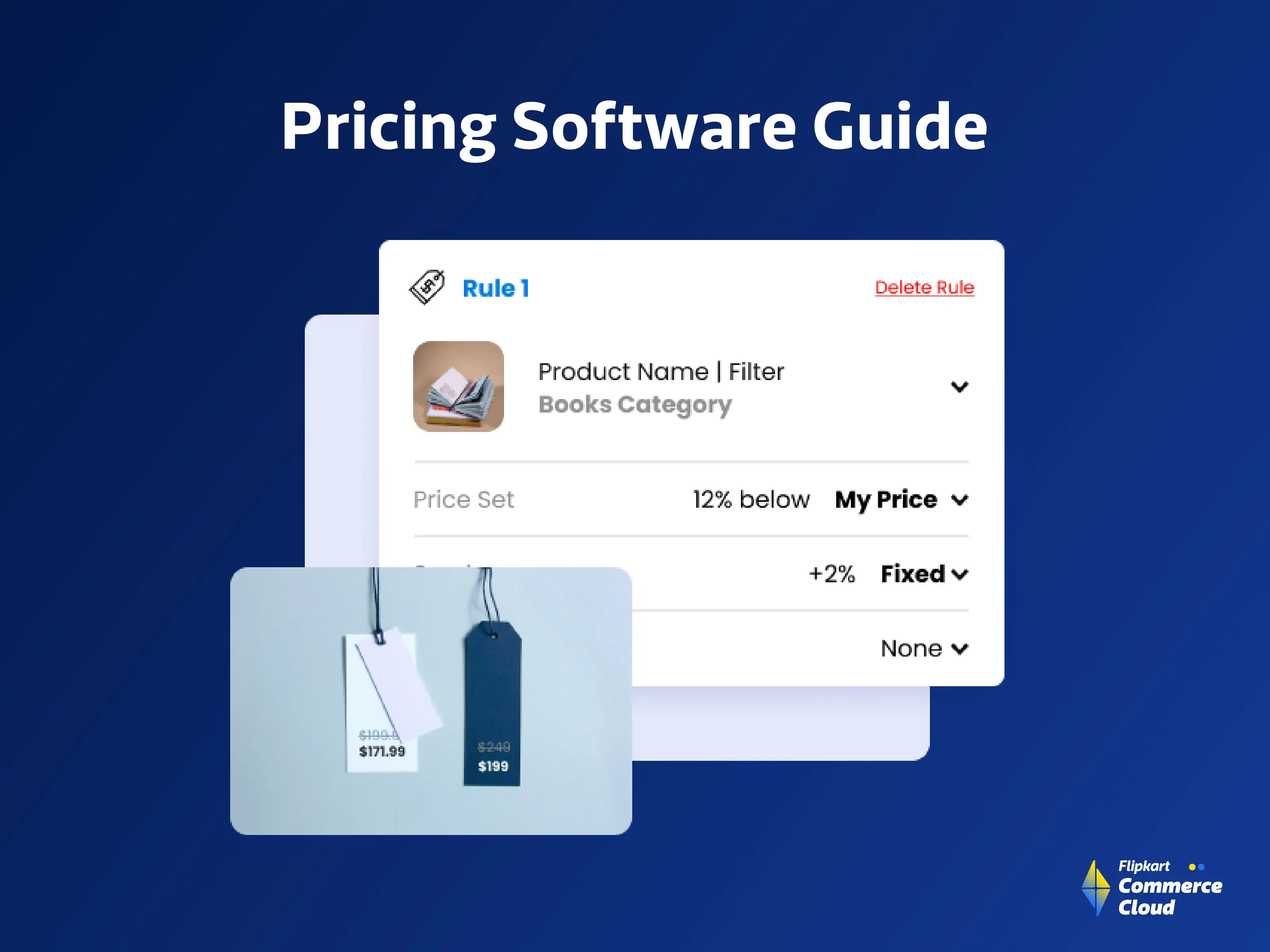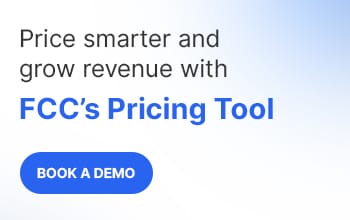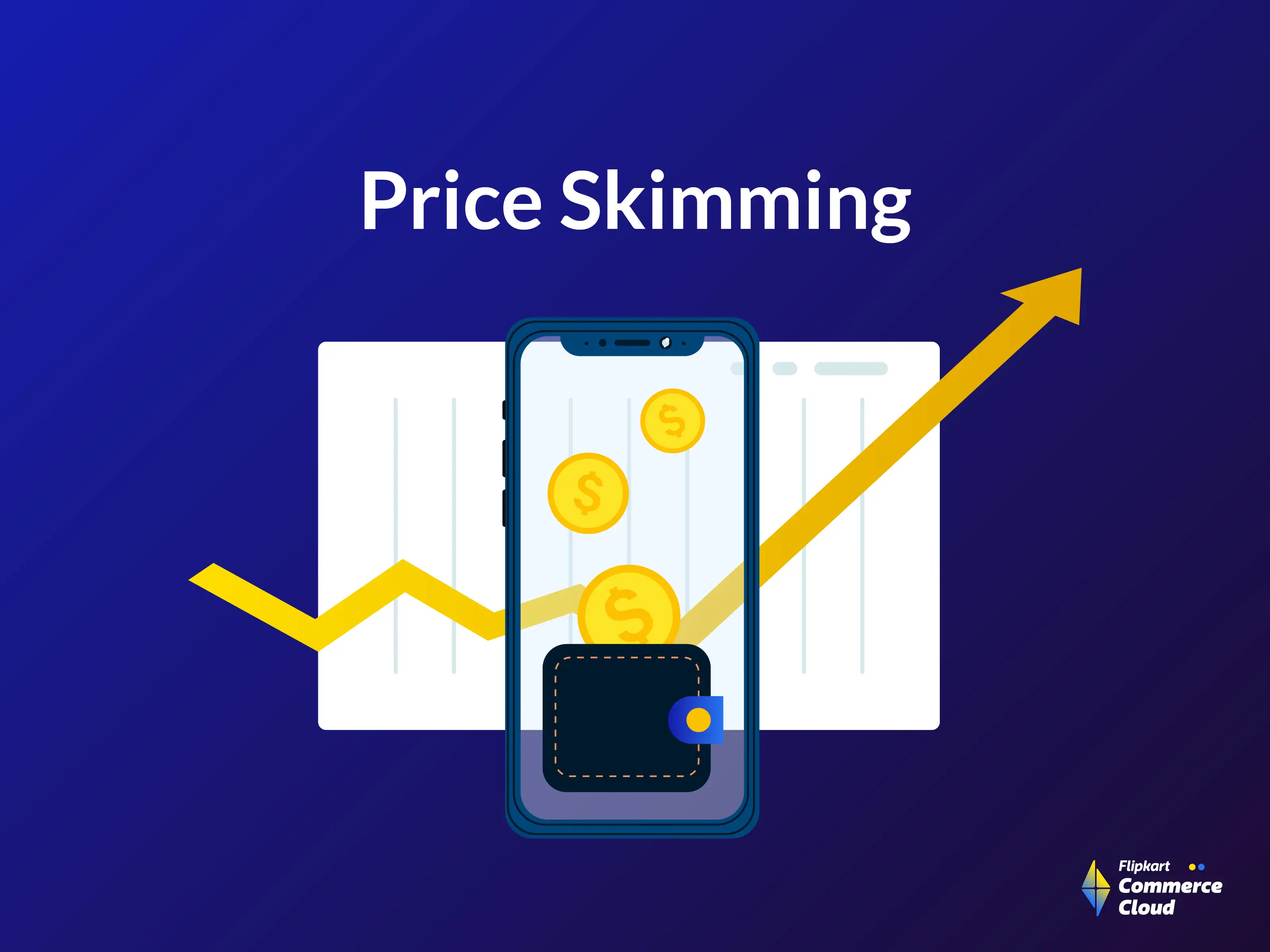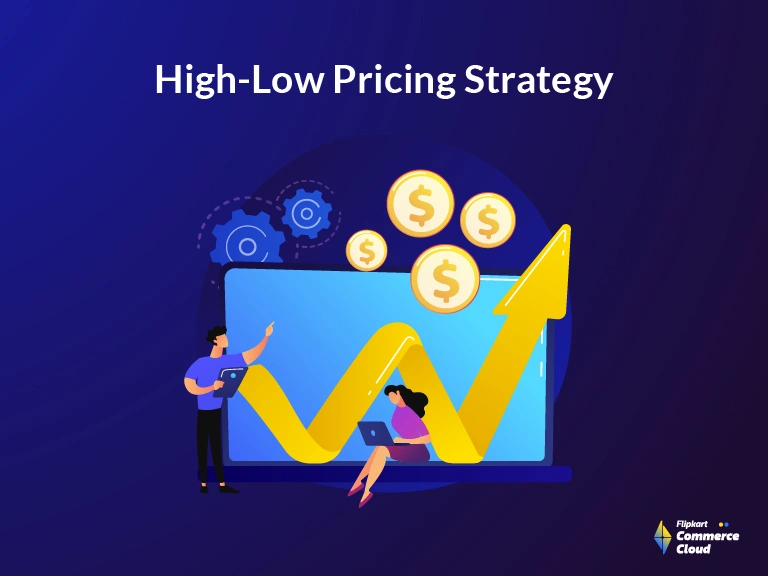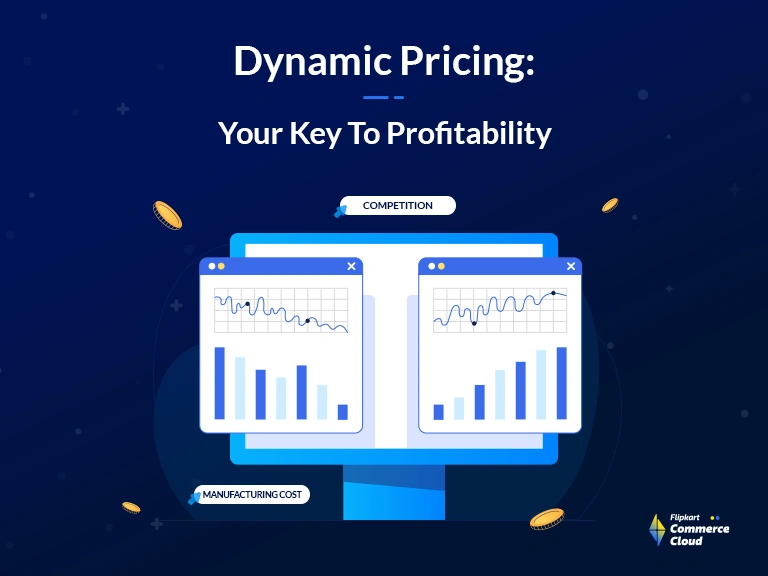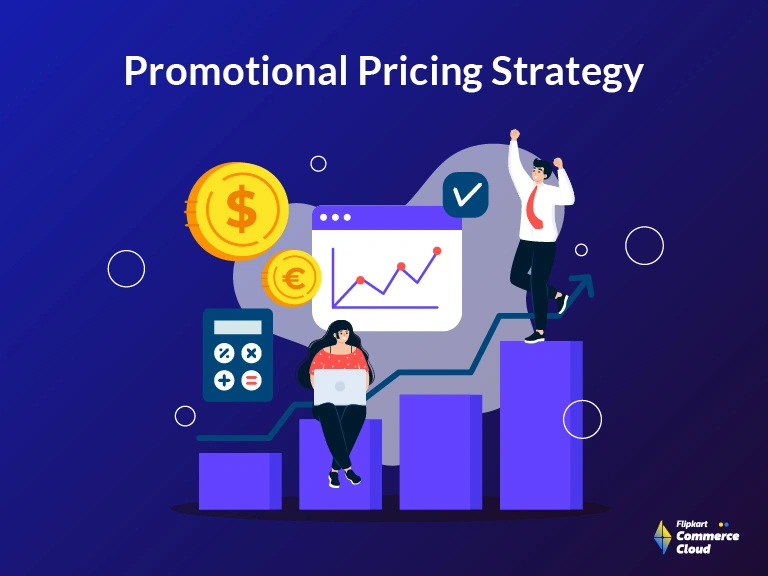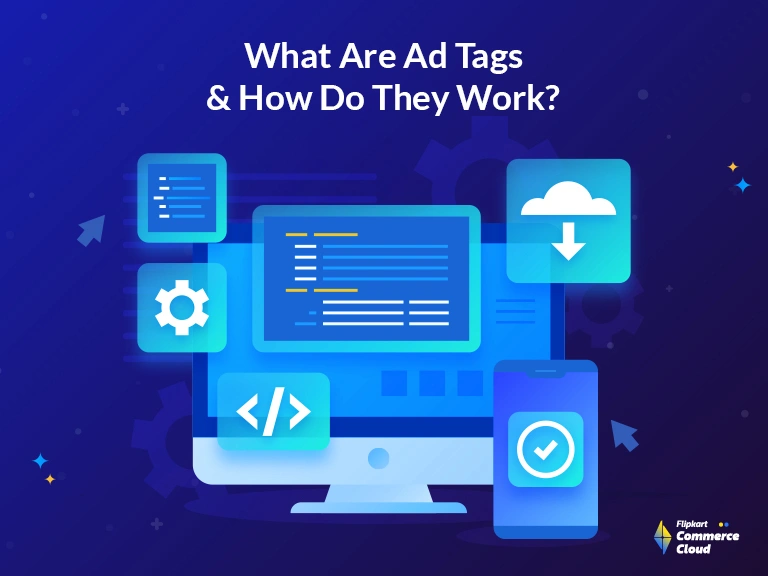E-commerce sales are estimated to cross $8 trillion by 2027 globally, and a study by McKinsey suggests that up to 60 percent of this growth is likely to be driven by marketplaces. These trends point to intense competition in the coming years, making it vital for you, as a retailer, to have a winning pricing strategy that sets you apart from competitors.
At FCC, after working with multiple large online retailers and developing robust enterprise-level pricing software tailored to their needs, we understand that navigating the complexities of pricing strategies in retail is often challenging, with tasks ranging from managing prices for key inventory to customizing effective pricing strategies for tail inventory. With millions of SKUs to handle, it is not humanly possible to work on spreadsheets anymore. With the growing need for scale, you need pricing software that can effectively analyze, manage, optimize, and execute pricing strategies, driving growth for your business.
With this guide, we will cover essential aspects of pricing software, including its need in retail, essential features, benefits, and questions to be asked before making a final decision.
What is Pricing Software?
Pricing software is a platform designed to help retailers analyze, manage, optimize, and execute their pricing strategies. It leverages advanced AI/ ML algorithms and robust data processing capabilities to provide real-time pricing recommendations based on factors like historical sales data, current market trends, and evolving customer behavior.
A reliable pricing software integrates various data sources and provides a comprehensive market view, enabling dynamic price adjustments to maximize profitability. Its ability to quickly process large amounts of data eliminates guesswork, enabling you to make informed pricing decisions.
Who Needs Pricing Software?
Here are some key business categories that can benefit from using pricing software to streamline their pricing strategies:
- Businesses with Complex Pricing Models: Pricing software helps such businesses manage the intricacies of their pricing models. It provides a unified view of the pricing strategy, enabling retailers to analyze and optimize their pricing models effectively.
- Businesses with Extensive Product Portfolios: For such retail businesses, this software automates the process of managing and optimizing prices for a wide variety of products, enhancing profitability and competitiveness.
- Businesses Needing Real-Time Market Data: Pricing software provides real-time market data, enabling businesses dependent on such information to respond swiftly to market fluctuations. It empowers companies to price their products competitively in line with consumer demands.
- Companies Looking to Improve Their Pricing Decisions and Stay Competitive: Pricing solution provide advanced pricing analytics and recommendations based on competitors’ pricing and market trends for informed pricing decisions. It helps companies align their pricing strategies with market dynamics to stay competitive.
What is the Need for Pricing Software in Retail?
As a retailer, you face numerous challenges that demand agile and strategic pricing solution. Here is how pricing software can help you improve your product pricing:
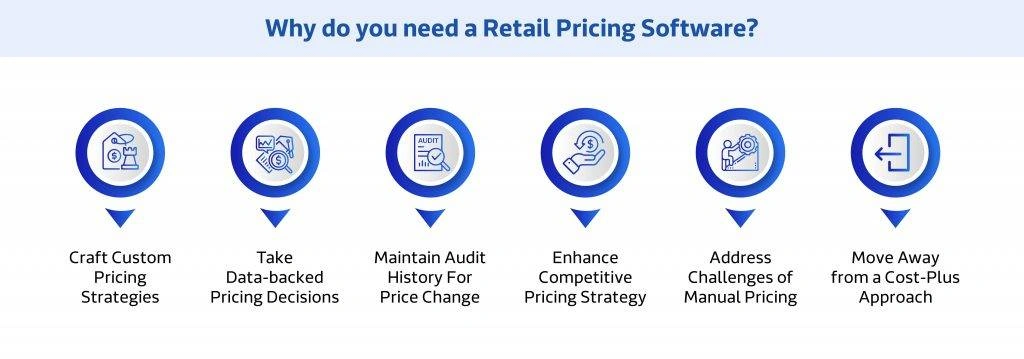
Craft Custom Pricing Strategies
Every product, customer segment, and sales channel demands a unique pricing strategy. Retail pricing software like FCC Pricing Manager allows you to create custom pricing strategies based on important factors such as product attributes, customer behavior, and market conditions. This level of customization helps make effective pricing decisions for improved profitability.
How can Flipkart Commerce Cloud’s Pricing Platform help?
The FCC pricing platform offers complete flexibility when it comes to setting repricing logic.
For example, you can select product categories on various parameters (text or numeric conditions) with our ‘Product Filters’ Feature. For example, you can choose:
- Text conditions: Only select products sold by a specific brand, e.g. Apple
- Numeric conditions: Pick only products that have an Inventory Age > 80 days
You can also build custom logic using any client or competition data and combine multiple logic in a single strategy to optimize your pricing further.
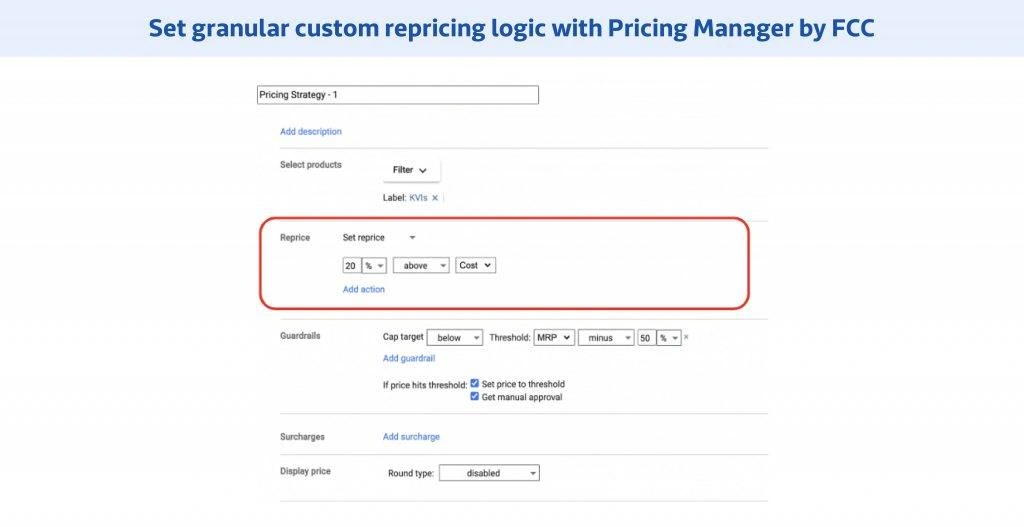
Take Data-backed Pricing Decisions
Pricing software provides you with data-driven insights to enhance your pricing decisions. It allows you to test multiple pricing scenarios, predict the impact of a price change, and make data-backed decisions.
For instance, with FCC Pricing Manager, you can visualize the impact of your current pricing strategies and evaluate areas of improvement on a centralized, plug-and-play dashboard.
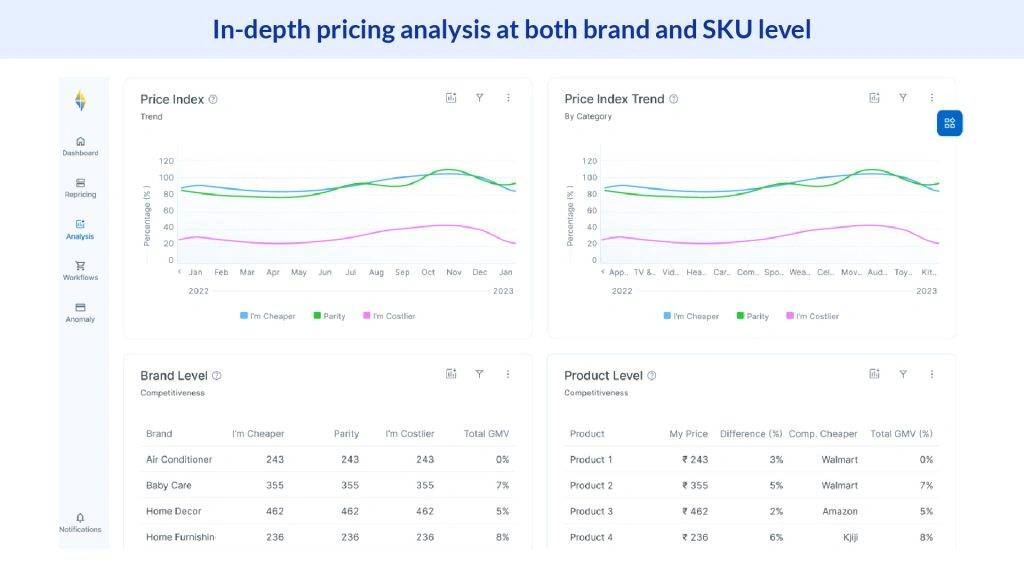
Maintain a Complete Audit History
Transparency and compliance are crucial in pricing decisions, and a complete audit history serves as a vital tool for achieving these. Pricing software plays a key role here, as it automatically records every price change, thereby providing a clear and detailed audit trail.
Improve Competitive Pricing Strategy
Pricing software helps optimize your pricing strategy by continuously observing competitors and market trends. It provides real-time insights, enabling you to adjust your prices promptly and effectively.
At FCC, we have developed a multi-layered competitor intelligence module to offer you end-to-end integrated competitor crawling and matching with an impressive 98% precision. This isn’t just a number; when used effectively, it can translate directly into a 3-5% uplift in your revenue.
The competitor pricing feature of this module further assists you in staying ahead of the curve. You can track competitors’ prices at predefined frequencies, compare prices across multiple key vendors, and even bypass blockers on key competitors like Amazon. This granular control over pricing information puts you in the driver’s seat of your competitive pricing strategy.
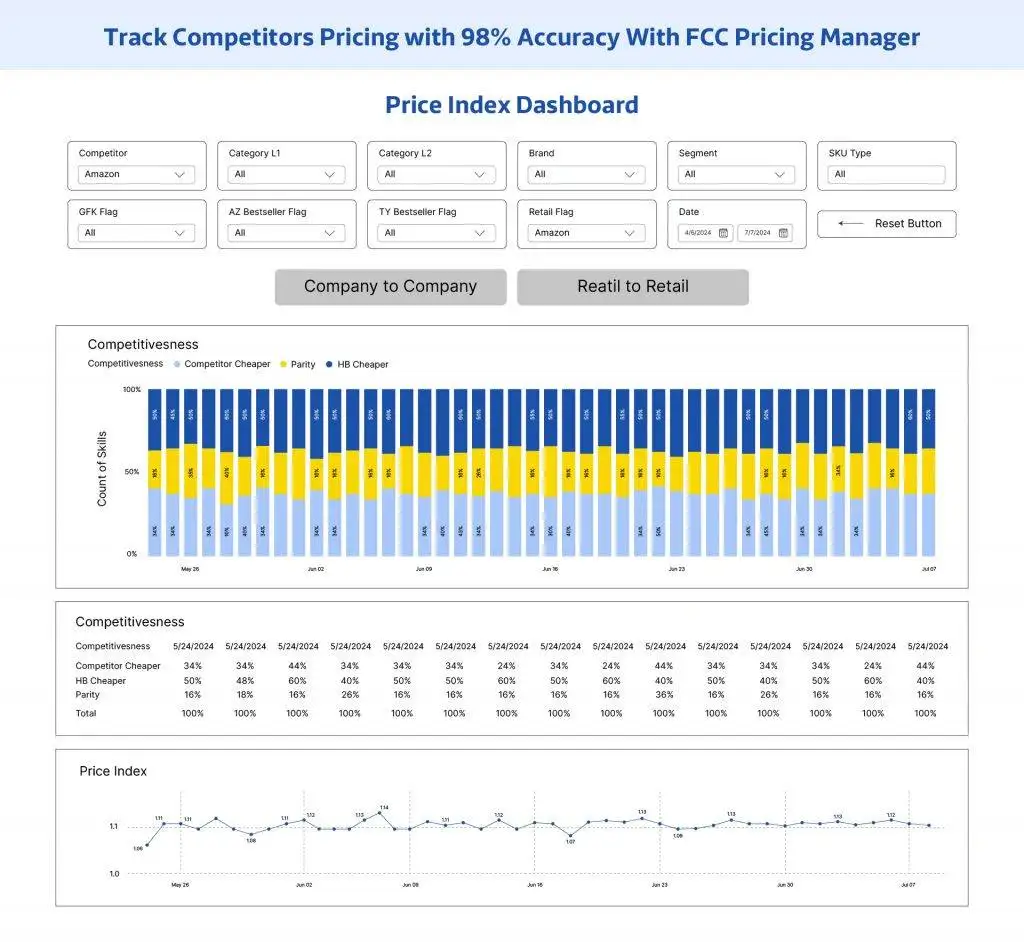
That’s not all, with our Competitor Intelligence suite, you receive an extensive bundle of features, including pricing, availability, reviews, and promotions. It is a one-stop solution, providing the tools you need to stay competitive and drive growth.

Addressing Challenges of Manual Pricing
Manual pricing can be time-consuming and prone to errors, and keeping up with the changes in the retail market can be challenging. Pricing software addresses these issues by automating the market pricing process, saving you time and effort and allowing you to focus on strategic tasks.
Technologically advanced pricing software will also provide functionalities for manual intervention. For instance, the FCC Pricing Manager offers a structured framework for approvals and guardrails in pricing decisions, ensuring that they align with the business goals.

Move Away from a Cost-Plus Approach
The traditional cost-plus pricing approach, where a fixed margin is added to the cost of a product, may not always result in optimal pricing. A pricing software enables you to adopt pricing strategies based on factors like demand elasticity, customer willingness to pay, and the competitive landscape.
How to Get the Best out of Pricing Software?
Here are some tips and best practices to help you get the most out of your pricing software:
- Ensure Senior Leaders are Aligned on Pricing Strategy: Senior leaders need to comprehend the strategic importance of pricing and its impact on the bottom line. When senior leaders are aligned, they can champion the pricing strategy throughout the company, creating a culture that values data-driven pricing decisions.
- Vet Your Data Inputs to Ensure Accuracy and Relevance: The effectiveness of pricing decisions depends on the accuracy and relevance of your data inputs, including sales data, cost information, and competitor prices. Regularly vetting the data inputs ensures that your pricing software is working with the best available information.
- Choose Products Carefully Based on Your Specific Needs and Goals: Each product has unique pricing needs influenced by factors like demand elasticity, competitive landscape, and profit margins. Focusing on select products can maximize the value derived from your pricing software.
- Set Clear Standards and Guardrails for Pricing Decisions: Clear standards and guardrails help maintain consistency and prevent arbitrary pricing decisions that could undermine your pricing strategy. This includes setting price limits, defining pricing rules, and establishing approval processes for any changes.
- Stay Focused on Your Pricing Strategy and Continuously Monitor and Adjust as Needed: A successful pricing strategy evolves with market developments. Regular reviews of your pricing performance, monitoring market trends, and readiness to adjust prices are essential.
Features to Look for in a Pricing Software
Choosing the right pricing software is crucial for optimizing your pricing strategies. Here is a breakdown of the key features you must look for to ensure you get the most out of your investment:
- Advanced Analytical Capabilities: Pricing software with advanced analytical capabilities can process and analyze large volumes of data, uncovering patterns and insights that can help optimize your pricing decisions.
- Flexible Pricing Rules: Every business is unique and needs a tailored pricing strategy. Pricing software like FCC Pricing Manager, which offers comprehensive pricing rules, can cater to these needs. It allows you to implement a pricing strategy aligning with your business goals and market dynamics.
Our rule-based dynamic engine takes this a step further. It enables advanced pricing strategies that can deliver significant 4-7% margin growth. As a retailer, you can apply rules based on factors like competitor pricing, inventory levels, product categories, geography, business goals, or market demand.
The supported rules are extensive and include Category (brands, manufacturers, Key Value Items (KVIs), Demand (impressions, page views, conversion rate, saved items), Location (country, city, or postcode), and several more.
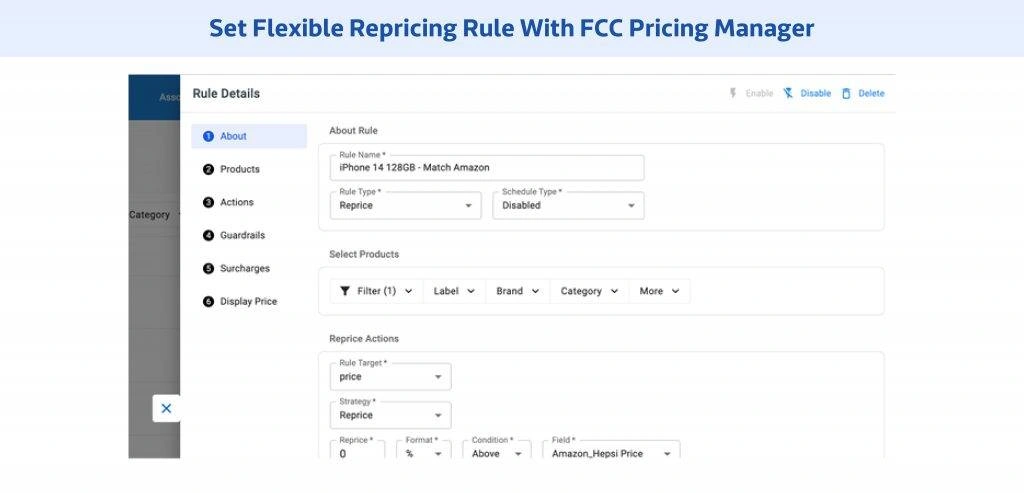
- Accurate Competitor Crawling and Monitoring: Utilizing pricing software that provides accurate competitor crawling and monitoring enhances your competitive edge. It updates you about the latest changes in competitor prices, allowing for informed responses for an agile pricing strategy.
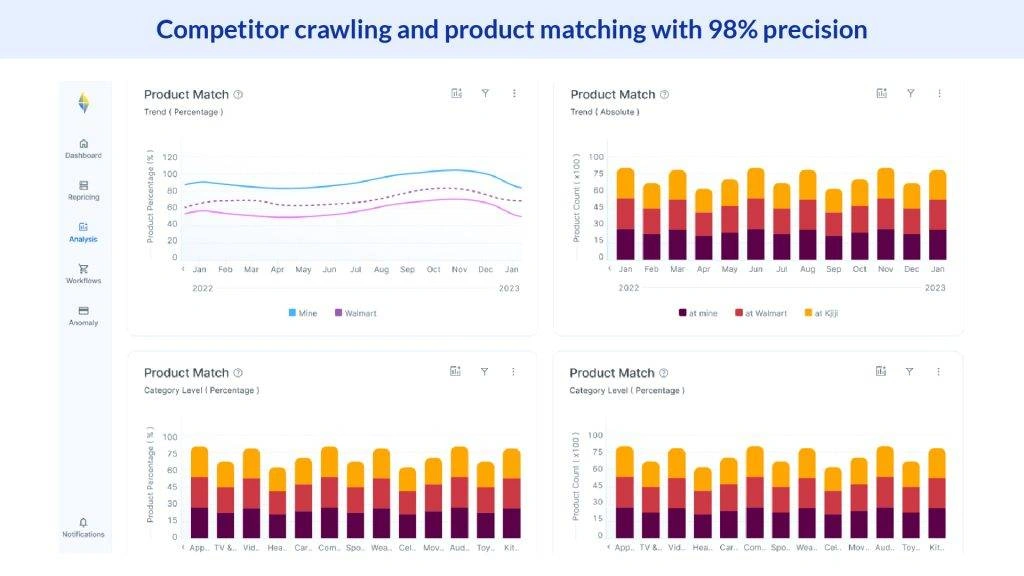
- Compatibility with Multiple Sales Channels and Platforms: Today’s consumers shop across multiple channels and platforms. Look for pricing software that has the capability to integrate into multiple channels and offer a comprehensive view of pricing. For example, the FCC Pricing Manager can let you compare prices across multiple key vendors and bypass blockers on key competitors such as Amazon.
- Dynamic Pricing Adjustments Based on Real-Time Market Conditions: Market conditions can change rapidly, and your pricing needs to keep up. Pricing software that offers dynamic pricing adjustments can help you respond to these changes in real time, ensuring your prices always reflect current market conditions.
- Centralized Reporting and Analytics: Understanding the impact of your pricing decisions is key to improving your pricing strategy. Pricing software that provides centralized reporting and analytics can give you this understanding. It delivers clear and actionable insights, enabling you to gauge the performance effectively.
- Leverage AI and ML to Maximize Revenue and Profit: Artificial Intelligence (AI) and Machine Learning (ML) are transforming the way retailers operate, and pricing is no exception. Pricing software that leverages AI and ML can provide accurate and personalized pricing recommendations for profit maximization.
- Ability to Combine Multiple Repricing Logics in a Single Strategy: Your pricing strategy may involve diverse repricing logic for different products or situations. Pricing software that allows you to combine these logic in a single strategy can provide a more comprehensive and effective pricing solution.
How Will My Business Benefit from Pricing Software?
Implementing pricing software in your retail business can bring about the following benefits:
- You can stimulate various pricing scenarios and understand their potential impact on your business. The predictive modeling capability of software cab help reduce risk and improve profitability.
- Pricing software doesn’t just react to market changes, but also proactively alerts you to pricing opportunities and emerging market trends in realtime. This insight empowers you to remain ahead of the curve and seize pricing opportunities before the competitors.
- Provides a unified view of all pricing data, and strategies, allowing you to make strategic pricing decisions with confidence.
- Pricing software simplifies the pricing process, allowing you to spend less time on management and more time on strategic decision-making.
What Questions Should Be Asked When Selecting a Pricing Software?
You should ask the following questions for selecting the best pricing software for your retail business:
- How well does the price management software integrate with our existing tech stack and data sources?
- What level of customization and flexibility does the software offer?
- Does it provide a centralized platform for better visibility into all aspects of product pricing and revenue management?
- How user-friendly is the price optimization software, and what kind of training and support is provided?
- What kind of pricing models and strategies do pricing software solutions support? Can it help improve our operational efficiency?
- How does the software handle complex pricing scenarios, such as bundling and promotions? Can it help set optimal prices for different scenarios?
- What are the different reporting and advanced analytics abilities that the software offers?
- Can the software automate pricing decisions and provide a centralized management interface for better control and analysis?
- What kind of security and compliance measures does the software have in place?
- Does the software offer accurate competitor crawling, matching, and real-time data for dynamic pricing adjustments
Elevate Your Pricing Strategy with Flipkart Commerce Cloud (FCC)
- Pricing: Track competitor’s prices at predefined frequencies, compare prices across multiple key vendors and bypass blockers on key competitors such as Amazon.
- Promotions: Track their promotions and promotional cycles at the SKU level and track the impact of offline promotions using dynamic labels.
- Availability: Monitor overall product availability and track geographically specific availability.
- Reviews: Monitor customer sentiment and overall rating of your competitor’s product at the SKU level.
